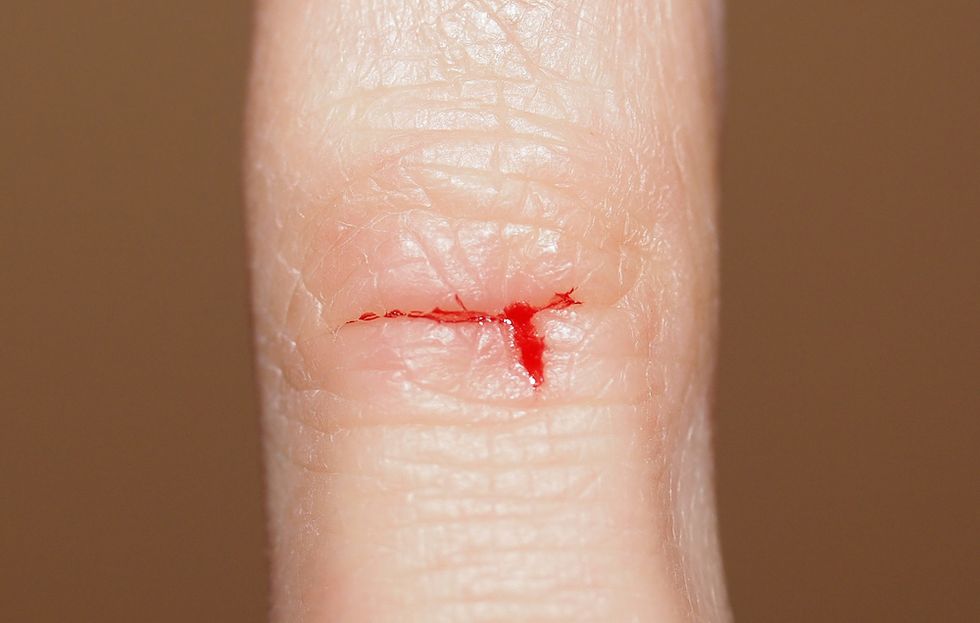
Blood on Your TP? Here's How to Know if It's Anal Fissures Women's Health
In the US, approximately 342 000 new cases of anal fissure disease are reported each year. 1,2 Anal fissures can occur in patients of all ages, but most commonly affect younger and middle-aged patients. 1 Anal fissures can be acute or chronic (ie, present for >8 weeks). An anal fissure consists of a tear in the anoderm (the epithelial lining of the anal canal under the dentate line) that.
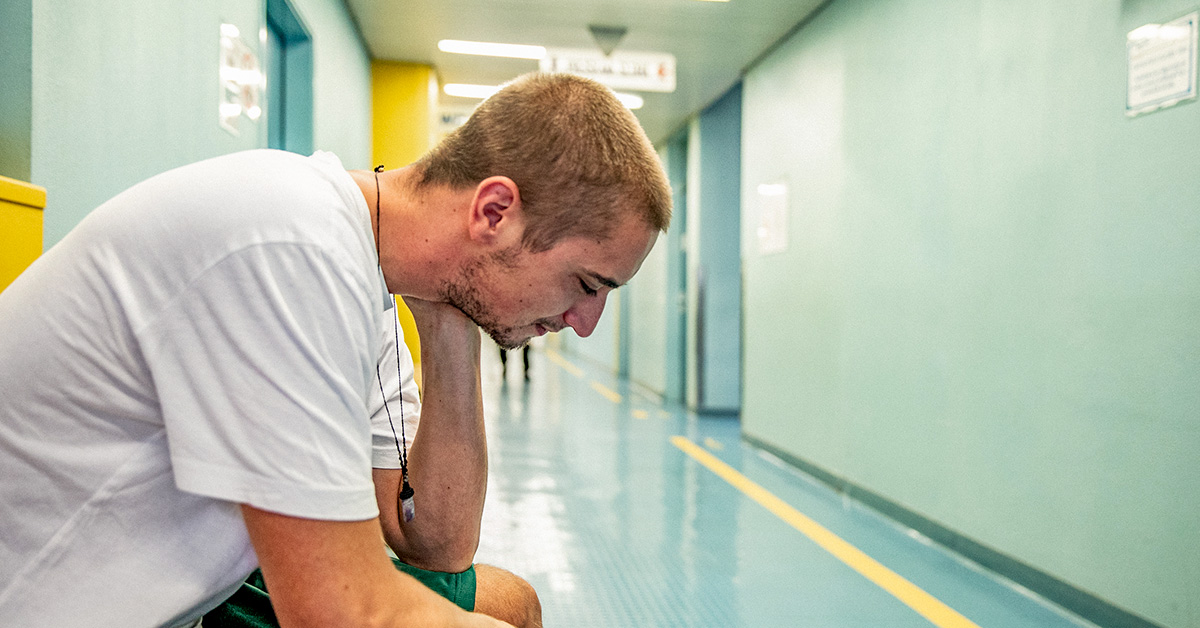
Anal Fissure Symptoms, Causes, and Prevention
Picture of Anus An anal fissure is a cut or tear occurring in the anus (the opening through which stool passes out of the body) that extends upwards into the anal canal. Fissures are a common condition of the anus and anal canal and are responsible for 6% to 15% of the visits to a colon and rectal ( colorectal) surgeon.
.jpg)
What is Fissureinano (Anal fissures)? And its Common Symptoms
An anal fissure is a common condition and affects anyone regardless of age, sex, race, or ethnicity. Symptoms of anal fissures include pain during defecation and sometimes minor bleeding. Serious symptoms of an anal fissure, such as bleeding that won't stop, may require immediate medical attention, but this is rare.

Anal Fissure Gastroenterology Of The Rockies
Common Symptoms. If you have an acute anal fissure, you may feel a tearing or ripping sensation in that area during bowel movements. You may also notice: A visible tear in the anus. Pain during.

Article What are Anal Fissures and How Can I Identify Them?
An anal fissure is a small cut or tear in the lining of the anus. The crack in the skin causes severe pain and some bright red bleeding during and after bowel movements. At times, the fissure.
/GettyImages-987962846-5bbcbf3e46e0fb0051d6032f.jpg)
Overview and Treatment of Anal Fissures
An anal fissure that lasts more than 6 weeks is called a chronic anal fissure. An anal fissure is a small tear of the skin around the back passage (anus). An anal fissure that lasts more than 6 weeks is called a chronic anal fissure.. Anal fissures are common and probably affect about 1 in 350 people each year. They are more common in people.
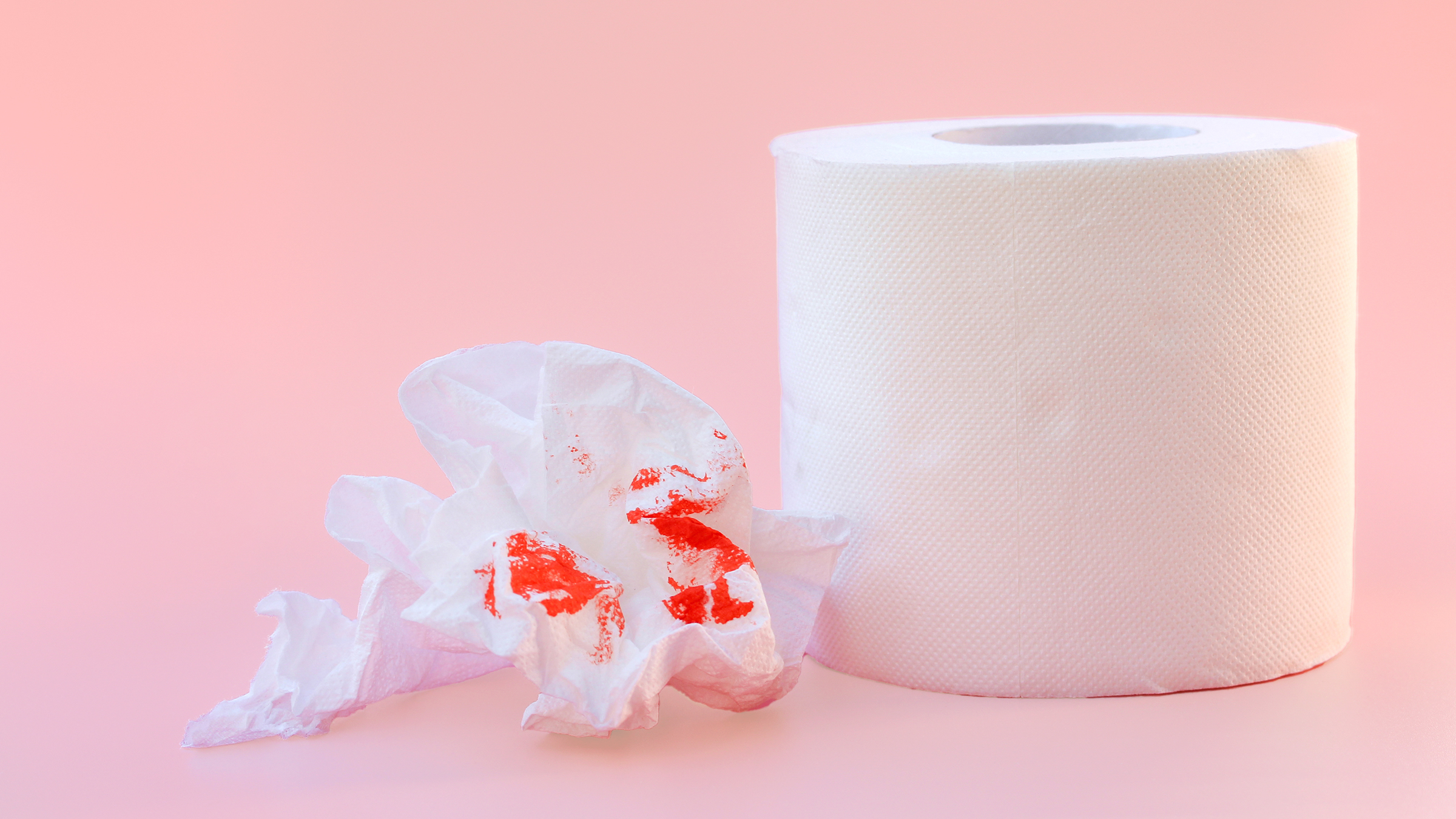
What Are Anal Fissures? Causes, Symptoms, and Treatment GoodRx
An anal fissure is a tear in the lining of the anal canal, or a cut or tear in the anus region, that extends into the anal canal. It can result from constipation, anal sex, infections, and other.

Anal Fissues Diagnostic Endoscopy Centre Sydney
An anal fissure is a crack or split in the tissues that line your anal canal. Trauma causes the lining to tear, causing acute pain and bleeding. Most fissures heal with self-care. Contents Overview Symptoms and Causes Diagnosis and Tests Management and Treatment Prevention Living With Overview

Diagnosis and management of anal fissures NASGP
Constantinis / Getty Images Symptoms Some symptoms in common of an anal fissure and a hemorrhoid include blood on or in the stool and pain while having a bowel movement. However, they can cause other problems as well. Telling the difference between them based on symptoms might be difficult, so a diagnosis from a healthcare provider is needed.
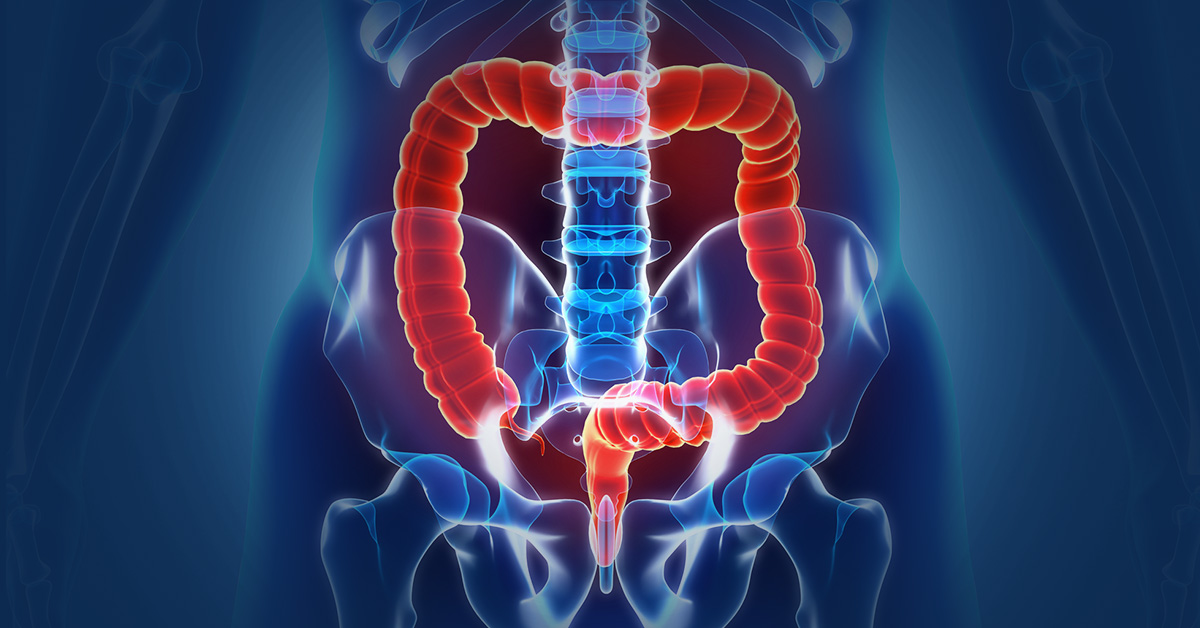
Anal Fissures Treatment & Diagnosis MedStar Health
Prevention. Home remedies for anal fissures include sitz baths, fiber supplements, stool softeners, and adequate hydration and fiber intake. An anal fissure is a tear or a break in the lining of the anal canal, where stool passes out of the body. They are painful and may bleed, causing so much discomfort that they can affect your quality of life.

Anal Fissure Anal Fissure Causes
Anal cancer Contacting a doctor Diagnosis FAQ Summary Various factors can cause one or more bumps on the anus. These include anal fissures, hemorrhoids, and skin tags. The anus is the.

Everything You Need to Know About Anal Fissure Surgery
ascg Photography/Getty Images An anal fissure is a crack, tear, or sore in the lining of the anus. Many of these fissures occur in people with constipation who pass hard or large stool, which.

Management of anal fistula The BMJ
Usually this exam is all that's needed to diagnose an anal fissure. A more recent, acute anal fissure looks like a fresh tear, somewhat like a paper cut. A long-lasting, also called chronic, anal fissure likely has a deeper tear. It also may have internal or external fleshy growths. A fissure is considered chronic if it lasts more than eight weeks.
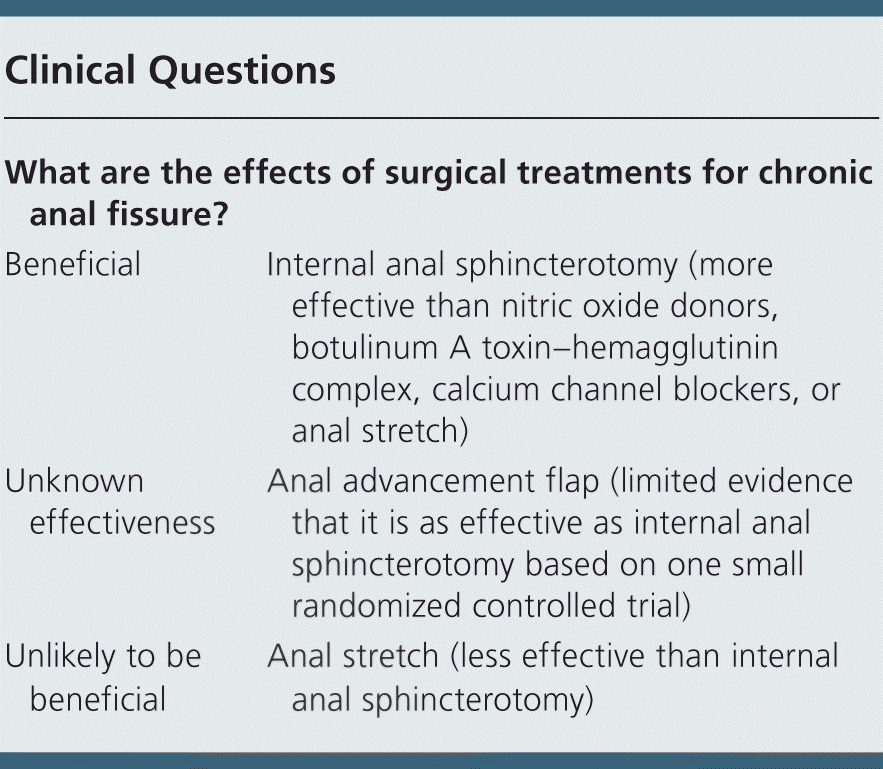
Chronic Anal Fissures AAFP
An anal fissure is a small tear in the thin, moist tissue that lines the anus. The anus is the muscular opening at the end of the digestive tract where stool exits the body. Common causes of an anal fissure include constipation and straining or passing hard or large stools during a bowel movement.
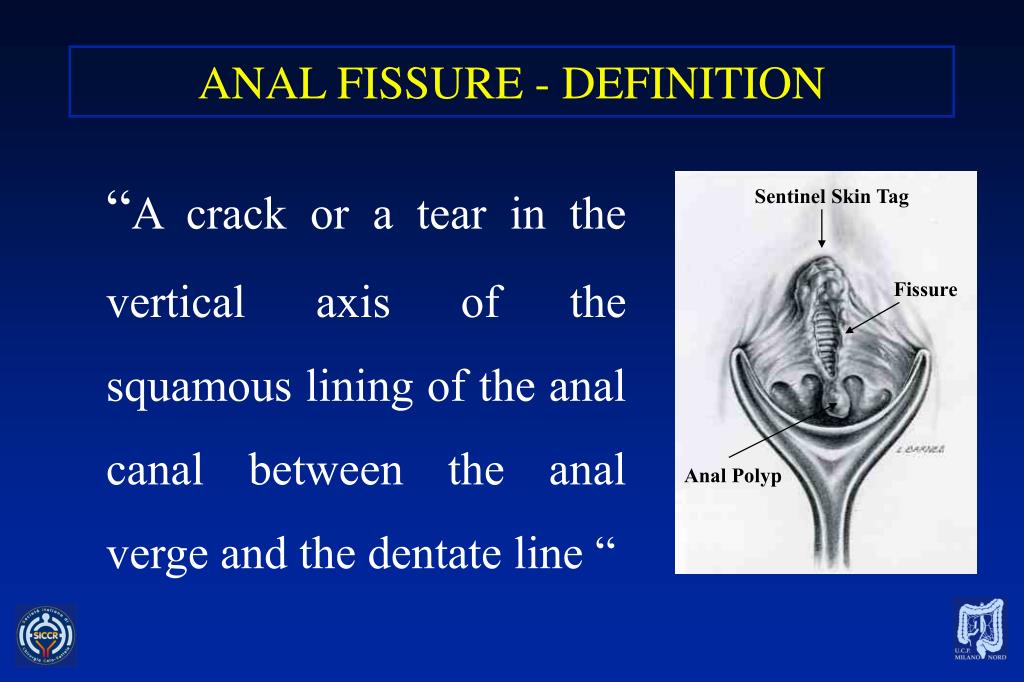
PPT TREATMENT OF ANAL FISSURES PowerPoint Presentation, free download
An anal fissure is a superficial tear in the skin distal to the dentate line and is a cause of frequent emergency department visits. In most cases, anal fissures are a result of hard stools or constipation, or injury. Anal fissures are common in both adults and children, and those with a history of constipation tend to have more frequent episodes of this condition.
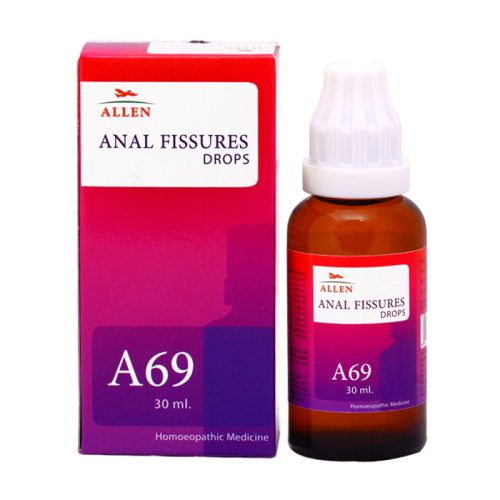
A69 ANAL FISSURES
An anal fissure is a cut or a tear in the thin, delicate lining of your anus. The tear often exposes the muscle around the anus, called the anal sphincter. The damage can cause that muscle to.